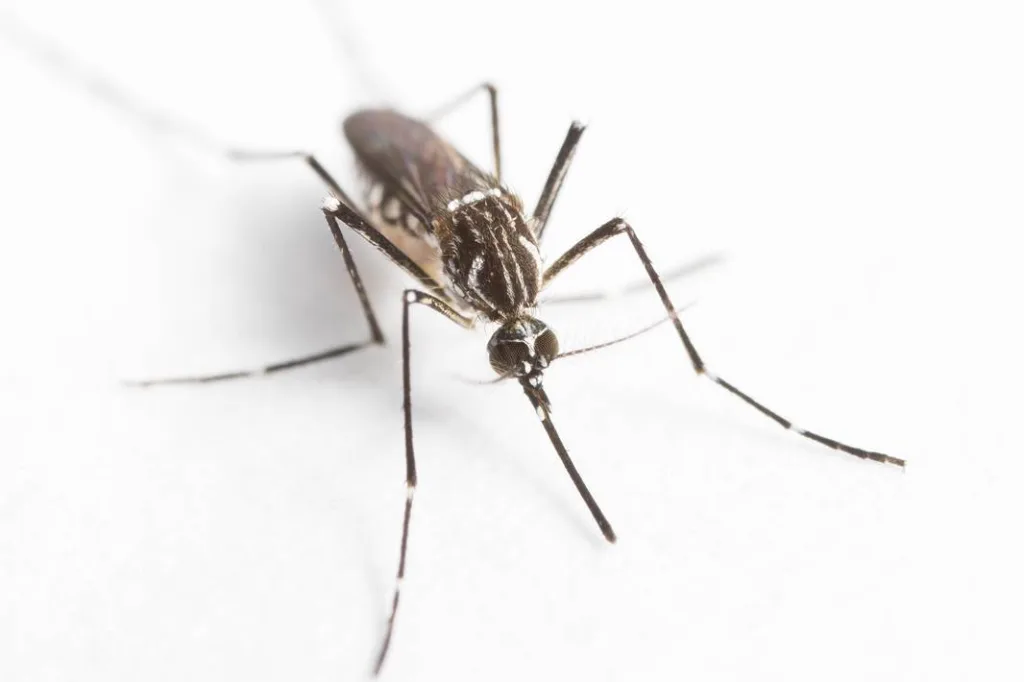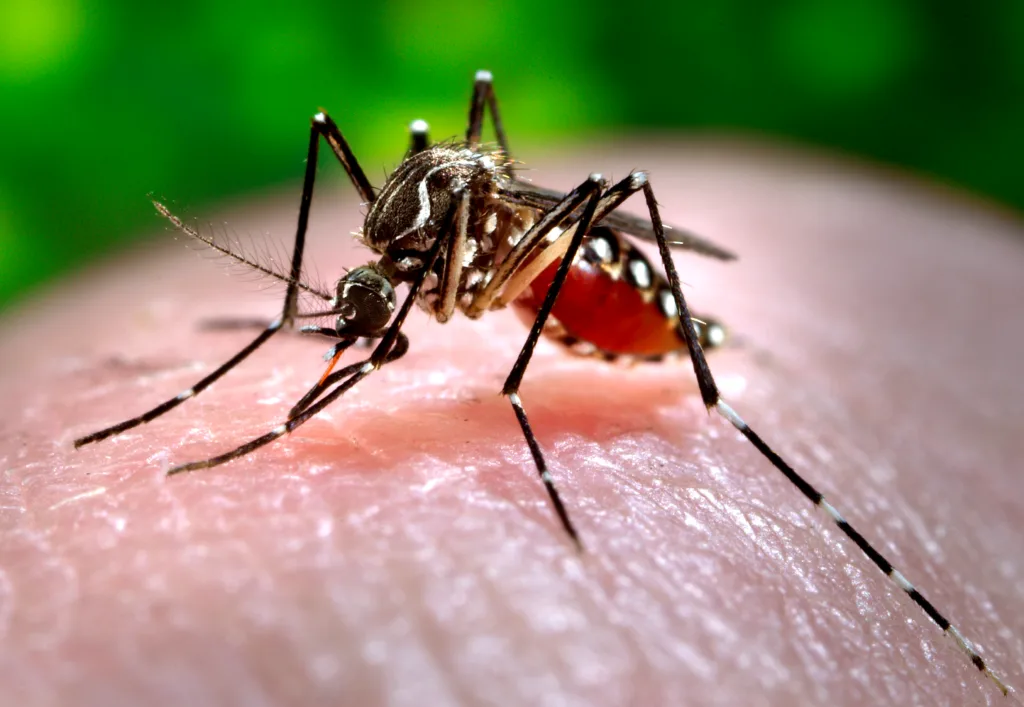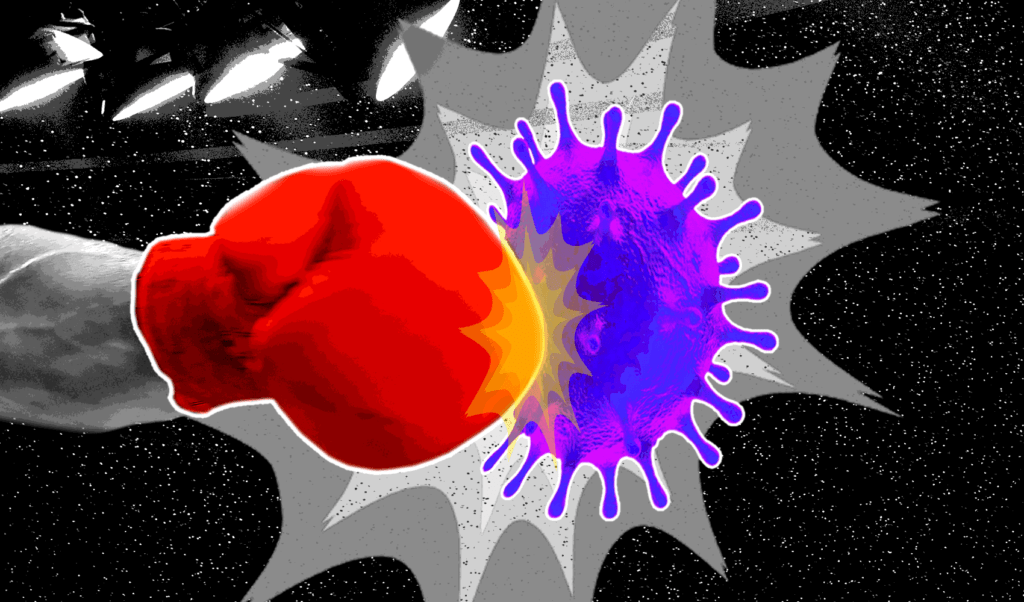Many mosquito-borne diseases can best be tackled by targeting the mosquitoes that spread them.
 Even if we could completely eradicate mosquitoes, like Aedes aegypti, would we want to? : Mosquito Control Laboratory, QIMR Berghofer CC BY 4.0
Even if we could completely eradicate mosquitoes, like Aedes aegypti, would we want to? : Mosquito Control Laboratory, QIMR Berghofer CC BY 4.0
Many mosquito-borne diseases can best be tackled by targeting the mosquitoes that spread them.
Scientists have a new weapon in the fight against mosquito-borne diseases.
They’re releasing male mosquitoes into the wild to mate with wild females, but there’s a sting in the tale.
These males have been manipulated so that the offspring resulting from their pairings do not develop — they die before they can ever bite or reproduce.
As a result, the entire population over the release area crashes and the chances of disease transmission diminish.
It’s just one approach being tested to stem the spread of mosquito-borne diseases such as malaria and dengue fever.
Mosquito-borne diseases kill 700,000 people each year. Malaria alone is responsible for more than 400,000 deaths. Most of those who die are under five years old.
There are a staggering 100 million cases of dengue every year, killing 40,000 people annually and costing billions in hospital care and lost earnings for the debilitated. Other viral diseases spread by mosquitoes include chikungunya, Zika, yellow fever, West Nile fever and Japanese encephalitis.
The battle to bring these vector-borne diseases under control has been going on for over a century, but many of them still have no effective vaccines or curative drugs.
Managing disease therefore involves attempting to control transmission by targeting the mosquito.
The problem is, conventional insecticidal means of control are failing due to the evolution of insecticide resistance and the difficulty of targeting insecticides effectively in modern, messy urban conurbations.
More sustainable, inventive solutions are needed.
The elegance of the male modification and release approach lies in the fact that it is the released male that seeks out wild females in order to induce sterility. The approach is species-specific and highly targeted in time and space.
This is in stark contrast to insecticide application, which requires a human operator to spray the right place at the right time with chemicals that can impact many non-target species in the ecosystem.
One male release technique, developed by Oxitec, involves the release of genetically modified transgenic males that express a gene inhibitor that interrupts mosquito development. This is turned off when the mosquitoes are fed a specific chemical in the laboratory.
So, while those laboratory-reared mosquitoes reproduce normally, the release of eggs in the wild means that only transgenic males emerge. When they mate with wild-type females, all the offspring die before reaching adulthood.
Releases are now underway in several countries. The approach is species-specific (currently targeting the dengue vector Aedes aegypti). However, releases need to be repeated frequently as mosquito populations recover or re-establish through immigration.
This genetic modification technique is self-limiting, meaning the gene dies with the offspring of released males and does not persist in the population.
This contrasts with other genetic approaches that aim to push genes through an entire population by linking them to ‘gene drive‘ technologies.
In their earliest iterations these promised to eradicate entire species but currently, eradication is no longer their major focus.
Rather, the emphasis is on ‘population replacement’, where genes that impede disease transmission are forced into wild type populations. The mosquito remains, but in a benign form.
The self-limiting genetic male release strategy joins the sterile insect technique and the incompatible insect technique as non-insecticidal, male-release approaches to mosquito control.
The sterile insect technique uses the mass release of irradiated males to mate with wild type females: resulting in no viable offspring.
Similarly, the incompatible insect technique exploits the fact that males infected with the bacterium Wolbachia are incompatible with wild-type females.
All three male-release techniques are now being trialled in the field and aim for elimination, or at least major suppression, of local populations.
Not all species will be amenable to this approach.
Currently, all male release strategies target Ae. aegypti which, crucially, is globally distributed, easy to rear and has limited dispersal capabilities. This makes it amenable to mass production and mass release in patterns that ensure high coverage of the wild-type female population.
Notably, Wolbachia-infected Aedes aegypti mosquitoes can also be used in ‘population replacement’ strategies to create females that are resistant to disease. To date, this is one of the most promising means of transmission control in this species.
Elimination is the reduction to zero in a specified geographic area. Eradication is defined as the permanent reduction to zero of a population: the species wipe-out.
Species eradication is only possible with the release of gene drives facilitating the spread of lethal genes. This approach to mosquito control is fraught with ethical and ecological concerns.
Ethicists may consider whether the deliberate extinction of a species is justified, while ecologists recognise that mosquitoes have roles as pollinators and as food sources for other invertebrates and vertebrates.
However, many habitats contain myriad mosquito species, and other small insects, so the local elimination or eradication of single species might not make a great difference to the ecosystem.
Humans have eradicated countless species in the last century, mostly unknowingly and largely in relation to rainforest destruction, so perhaps it’s not unreasonable to consider deliberately eradicating one or two more, particularly where they occupy ecological niches that are already very degraded.
As an example, the Ae. aegypti is the ‘cockroach’ of the mosquito world — highly adapted to the urban environment, reliant almost entirely on human blood for sustenance and proliferating in cities. Perhaps it would not be missed.
The future looks promising in the fight against mosquito-borne diseases.
In the short term there are some useful advances in personal protection from bites afforded by new classes of repellents.
In the medium term it’s likely that suppression strategies involving self-limiting genetic modifications, Wolbachia infection and irradiation will be extended to a small number of our most important mosquito vectors of disease.
In the longer term, there will continue to be a push for expanding the list of vaccine-preventable diseases — removing the need to worry about the vector at all.
But climate heating, globalisation, land use change and urbanisation will continue to put humans and mosquitoes in direct conflict, and will encourage the development of transmission pathways for new or emerging pathogens.
Mosquitoes have been around since the Jurassic, and although we might aim for local elimination or even eradication of some species, the Culicidae and the pathogens that adapt with them, will always be a threat.
Associate Professor Gregor Devine is a medical entomologist and Group Leader of the Mosquito Control Laboratory at QIMR Berghofer Medical Research Institute. His group focuses on mosquito vectors of disease with an emphasis on control, surveillance, ecology and investigations of vectorial capacity.
Originally published under Creative Commons by 360info™.














